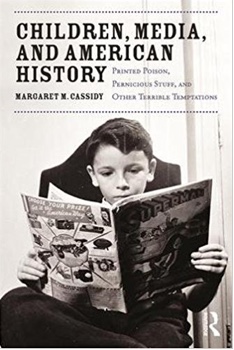Worried About the Effect of Modern Technology on Kids?
The minister feared for the children. Acknowledging the difficulties of raising them “at a time and in a place filled with obstacles and perils,” his sermon deplored new media, which produced “a constant flood of poisonous matter” dangerous to youth.
He wasn’t talking about today’s digital natives and their easy access to explicit content. The year was 1858, and Reverend Alfred Beach was warning of the dangers of newly affordable and mass-produced books.
Though today we think of “new media” as smartphones or other technological innovations, it’s worth remembering that all media were once “new media,” and looking carefully at how they were received, used and resisted helps place our reactions today in context.
New media in America have generally been met with a mix of fascination and fear, particularly when it comes to children. Every time a new medium makes contact with children, many adults perceive it as a threat. Dime store novels portrayed criminal acts that children might imitate. Film, radio and television could revolutionize American education, but might also harm children in ways that no amount of good schooling could counteract.
Today is no different, as digital media are reshaping the experience of childhood and parents are struggling to figure out what to make of the changes that are taking place. Contributing to the distress and confusion is today’s complicated media environment, which provides children with extensive, private access to all kinds of information and puts children in touch will all kinds of people. Adults cannot always know who children are talking to, what they are sharing, who is talking about them, or what they’re learning.
When adults talk about contemporary childhood, they love to reference the past, which always seems to surpass the present in everything good. Kids grow up too fast these days; kids don’t play outside anymore; video games are nowhere as great as the games we played, etc. The problem is that people’s memories are notoriously selective, so they tend to be nostalgic for a childhood that may have played out a little differently than what they remember. On a larger scale, the contemporary romanticizing of the past leaves out some key details that would more accurately capture what childhood was like for past generations.
While cultivating a media environment that’s in the best interests of children, we must still take care to remember that we are not facing any challenges that are fundamentally different from those that people before us faced. Our reactions, beyond just the understandable desire to look out for children, often tell us much more about the adults doing the worrying than the children who are said to be in danger.
Reverend Beach recognized those challenges even back in 1858. After naming all the dangers he feels children face, he lamented, “These dangers are such that we cannot remove them. Our children will have to meet and encounter them…. Alas! We cannot hope to have it otherwise.” He goes on to advise parents that our children “must then be, in some way, prepared to meet them…. This is our work.”
In many times and places, as we have seen, children and adults have had to adapt to a changing media environment. Adults must continue to do their best to prepare children to navigate their complex media environment and thrive in the world they have inherited from us.
